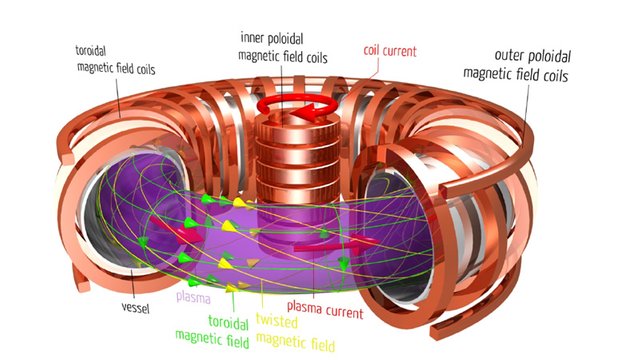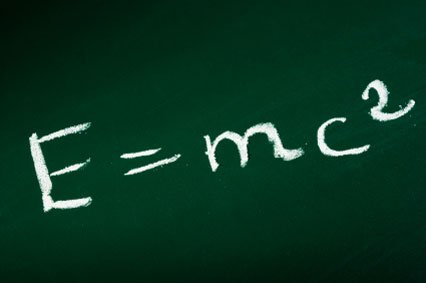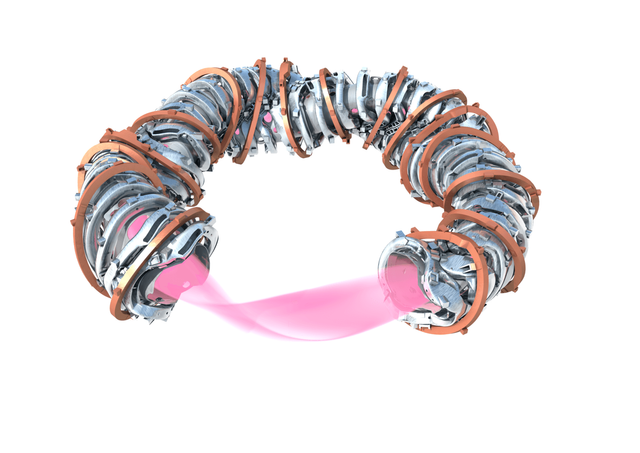Will Tokamak ( Fusion Power ) Bring Limitless Clean Energy?
You might ask what the Tokamak is right?
Tokamak is a machine that produces toroidal magnetic field which confines plasma and is udes as thermonuclear reactor. Largest tokamak in the world is being built in France, project ITER, International Thermonuclear Experimental Reactor which should produce 500MW of power.
Fusion Power
Fusion power is energy generated by nuclear fusion, or more broadly, the use of that power as an energy source. Fusion has a number of advantages over fission as a source of power, including reduced radioactivity, ample fuel supplies, and increased safety. However, controlled fusion has proven to be extremely difficult to produce in a practical manner. Research into fusion reactors began in the 1940s, but as of 2017 no design has produced positive net energy.
On this video you can see the very first high-speed colour video from the COMPASS tokamak
This Tokamak is located in Czech Republic
A little bit History
Tokamaks were invented in the 1950s by Soviet physicists Igor Tamm and Andrei Sakharov, inspired by an original idea of Oleg Lavrentiev. Achieving a stable plasma equilibrium requires magnetic field lines that move around the torus in a helical shape. Such a helical field can be generated by adding a toroidal field (traveling around the torus in circles) and a poloidal field (traveling in circles orthogonal to the toroidal field). In a tokamak, the toroidal field is produced by electromagnets that surround the torus, and the poloidal field is the result of a toroidal electric current that flows inside the plasma. This current is induced inside the plasma with a second set of electromagnets.
Although nuclear fusion research began soon after World War II, the programs in various countries were each initially classified as secret. It was not until after the 1955 United Nations International Conference on the Peaceful Uses of Atomic Energy in Geneva that programs were declassified and international scientific collaboration could take place.
Experimental research of tokamak systems started in 1956 in Kurchatov Institute, Moscow by a group of Soviet scientists led by Lev Artsimovich. The group constructed the first tokamaks, the most successful being T-3 and its larger version T-4. T-4 was tested in 1968 in Novosibirsk, conducting the first ever quasistationary thermonuclear fusion reaction.
In 1968, at the third IAEA International Conference on Plasma Physics and Controlled Nuclear Fusion Research at Novosibirsk, Soviet scientists announced that they had achieved electron temperatures of over 1000 eV in a tokamak device. British and American scientists met this news with skepticism since they were far from reaching that benchmark; they remained suspicious until laser scattering tests confirmed the findings the next year
In 1973 design work on JET, the Joint European Torus, began.
In 1978, Bob Guccione, publisher of Penthouse Magazine met Robert Bussard and became the world's biggest and most committed private investor in fusion technology, ultimately putting $20 Million ($60 Million in 2016 dollars) of his own money into Bussard's Compact Tokamak.

Positively and negatively charged ions and negatively charged electrons in a fusion plasma are at very high temperatures, and have correspondingly large velocities. In order to maintain the fusion process, particles from the hot plasma must be confined in the central region, or the plasma will rapidly cool. Magnetic confinement fusion devices exploit the fact that charged particles in a magnetic field experience a Lorentz force and follow helical paths along the field lines.
Will it be our new limitless energy source?
In February last year a new chapter of fusion energy research commenced with the formal opening of Wendelstein 7-X. This is an experimental €1 billion (A$1.4bn) fusion reactor built in Greifswald, Germany, to test a reactor design called a stellarator.
It is planned that by around 2021 it will be able to operate for up to 30 minutes duration, which would be a record for a fusion reactor. This is an important step en-route to demonstrating an essential feature of a future fusion power plant: continuous operation.
In even easier version of explaining what Tokamaks are is that they are trying to a little sun on earth and get energy from fusing together two light atoms like Hydrogen or Helium. It results in creating slightly lighter atom and from the

we know that the difference between mass is converted into energy. Exactly from this thing Tokamaks are or they will be making an energy.
But the sun is hot, like very hot.

So to make this Tokamak magic happen, the two atoms have to be heated to millions of degrees Celsius, but of course such a degrees would melt everything and this is why we got magnetic field that contains plasma in order to prevent it to touch the walls of reactor and of course to prevent it from melting.
What makes the W-7X particularly interesting is its stellarator design. It comprises a vacuum chamber embedded in a magnetic bottle created by a system of 70 superconducting magnet coils. These produce a powerful magnetic field for confining the hot plasma.
Stellarators and tokamaks are both types of toroidal (doughnut-shaped) magnetic confinement devices that are being investigated for fusion power. In these experiments a strong toroidal (or ring) magnetic field creates a magnetic bottle to confine the plasma.

However, in order for the plasma to have good confinement in the doughnut-shaped chamber, the magnetic field needs to have a twist. In a tokamak, such as in the ITER reactor, a large current flows in the plasma to generate the required twisted path. However, the large current can drive "kink" instabilities, which can cause the plasma to become disrupted.
If the plasma is disrupted, the reactor needs to be flooded with gas to quench the plasma and prevent it from damaging the experiment.
In a stellarator, the twist in the magnetic field is obtained by twisting the entire machine itself. This removes the large toroidal current, and makes the plasma intrinsically more stable. The cost comes in the engineering complexity of the field coils and reduced confinement, meaning the plasma is less easily contained within the magnetic bubble.
Unfortunatly at this moment Tokamaks and Fusion Reactors are not suitable to provide commercial energy since their operating time is very short and they consume more energy than they can produce, but it will contribute to next experiments with the knowledge we will gain from this ones. We can compare it to Star Trek WARP Drive, first stages of the drive werent exactly fast but they were critical to build even better drives. Right now we are looking at something that might be the next generation power source and might let us jump on another ladder of technological progress.

</center
Sources :
https://en.wikipedia.org/wiki/Tokamak
https://phys.org/news/2017-01-fusion-power-limitless-energy.html
http://www.ipp.mpg.de/w7x
A great subject and great post. Will you be writing about the things that are available to the ordinary mortal? :)
Like which exactly? Wars engine?
Interresting! I will follow.
Have a look at my page, i'm an astrophographer !
https://steemit.com/photography/@clodoweg/horsehead-nebula-ic-434
Thanks a lot, i think that Tokamaks are the first stage of creating completly new power source. Source that we need in order to climb the ladder.
This Post have been Manually Curated / Upvoted.
Thanks for using #whalepower Tag ,
Please share Our #whalepower Tag with the community . Upvote , Reblogged Us , when ever you can.
This message comes-up when #whalepower Tag in use.
#whalepower is community project
Curated By @paul-gillbanks for #whalepower Tag
Founder @bullionstackers
Latest Blog – Please Click to Read